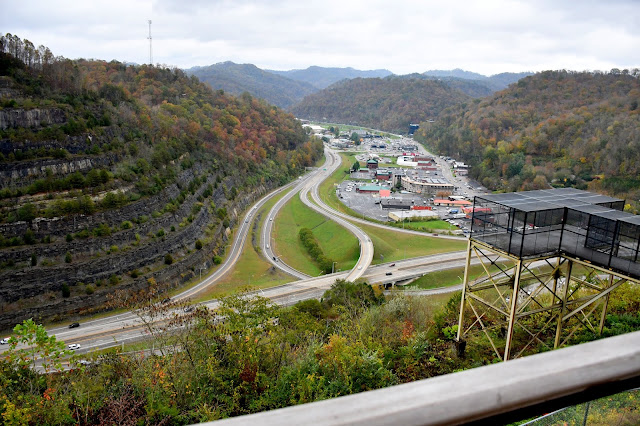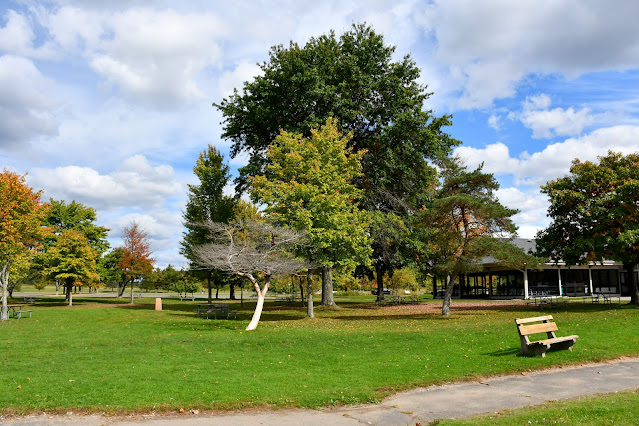Relocating due to Sea Level Rise
It really requires some true grit to begin making the determination that one needs to move to avoid serious consequences from any particular predicament; and the older one is, the more difficult it is to leave a loved area. Almost no area will be left untouched by climate change and all the other predicaments caused by ecological overshoot, but one predicament in particular, Sea Level Rise (SLR), brings forth a whole host of issues that many don't know about.
Sadly, I had the experience of attempting to explain this to a friend who got mad at me for posting scientific articles regarding the situation. Many people are suffering from denial of reality surrounding these issues, which doesn't help. Overwhelmingly, the easiest issue that almost everyone can see is street flooding caused by high tides (sunny day flooding). This makes the situation impossible to ignore, and building streets higher doesn't resolve the issue of water coming UNDERNEATH the streets through the aquifer, sewers, culverts, and other underground infrastructure. In fact, saltwater intrusion is a serious issue affecting the quality of drinking water in many areas close to the coast; especially in Florida due to the limestone underneath the ground. As saltwater replaces freshwater in the porous limestone, municipal water plants must relocate wells or pipelines further inland to avoid these consequences, increasing the cost of potable water for everyone.
Another issue that saltwater intrusion can exacerbate is concrete spalling, caused when reinforcing steel (often called "rebar") begins corroding, which causes it to expand, thereby causing the surrounding concrete to fracture and crumble. While steel only requires moisture to rust, certain chemicals (especially salts) can multiply the effect of spalling and reduce the amount of time required to cause serious damage. One can witness this damage by inspecting most any older bridge, but the most notorious incident in recent times is what happened in Miami, Florida at Champlain Towers, the condo building which collapsed.
Update 2-9-23: A newer article brings the reality into the light - with the title, Should We Start Preparing for the Evacuation of Miami? Unfortunately, the last paragraph doesn't leave me thinking the article is very realistic, quote:
"At some point, if South Florida doesn’t change its approach to navigating climate change, evacuation will be necessary. But by withdrawing from Miami too soon, we will lose a vibrant city that could have become a training ground for learning how to adapt to the planet’s future. It’s not just South Florida that is facing climate catastrophe; it’s Los Angeles, New York City, Mumbai, and many other places. Tremendous human effort created Miami, and if we act soon, that kind of effort can save it too—and show the world how it’s done."
The truth of the matter is that Miami can't be saved. SLR isn't going to stop this century or next, but will continue for centuries. Those who don't move inland will find themselves living in the ocean, plain and simple.
Of course, naturally, one of the larger concerns for most people is property value. Most people nowadays sock most of their income into their house, so the last thing they want is for those values to go down due to climate change-related issues, something which is entirely out of their hands. There are guides which can help a person determine if a property is in a questionable area or not, but ultimately, purchasing a home ANYWHERE close to an ocean or large river is a risky proposition, and will only get worse over time.
King tides currently cause flooding all over the globe and this issue is increasing in both size and scope as time moves forward.
While at first glance it may seem to many that this is only an issue for those close to the oceans, this couldn't be further from the truth. Everyone will be affected in one way or another. It requires much more than just looking at SLR to see all the related causes and effects of the melting of the cryosphere. Unexpected events are occurring such as entire towns being forced to relocate in Alaska, rivers changing their courses, glaciers disappearing, mudslides and/or landslides wiping out roads, houses, and more, and many others. California has its own looming disaster unfolding. These are areas I am familiar with, but SLR doesn't really discriminate; this is a GLOBAL scenario playing out in mountain glaciers, polar permafrost, methane hydrates, the Greenland Ice Sheet, Antarctica, the Arctic Ocean, beaches, islands, and shorelines around the world's oceans, and hundreds of rivers where people depend on glacial melt for their very existence (water security).
Probably worse than property values are what will happen over time. As nuisance flooding becomes a bigger issue and hurricanes become a more frequent visitor in addition to becoming more dangerous over time, more people will decide to leave the area. Some of these properties may be uninsurable or unsellable, as some properties may simply have been flooded or damaged during hurricanes or other extreme weather events and require condemnation from the county or municipality they are located in. This means that the property will no longer bring in tax money, adding extra burden to all the other tax payers in that district. As time moves on, more and more people will be forced out and taxes will become too high for the remaining residents who will also move to avoid those taxes making the situation worse for anyone and everyone who stay there. Businesses eventually will also leave and this is when a city or town dies. The tax base is eroded to such a level that the city or town can no longer afford to provide services to residents and the area becomes a ghost town with only a few residents remaining, usually those who simply cannot afford to move.
One last issue that I haven't mentioned yet is storm surge from major storm systems. Storm surge has the capacity to demolish large areas, making rebuilding after destruction of a property from such a scenario a non-starter. Unfortunately, many areas are not prohibiting such rebuilding provided some basic requirements are met. Of course, why people set themselves up for failure this way is beyond me.
So, I have covered most of the issues of SLR. What is the solution? Well, SLR is a predicament, so there is no actual solution to prevent it from happening. It has been happening, it is happening, and it will continue worsening over time. SLR cannot be prevented because climate change is irreversible on human timescales. So, the only remedy is to move away from the ocean further inland. If you live near a river, checking flood maps is advised to find out if you are in a flood plain or at risk of flooding. Moving to a location that is at least 300 feet above sea level (ASL) would be my recommendation, since even if all the world's ice melted it would still be under 300 feet. This accounts for both ice melt AND ocean warming, which expands the distance between water molecules creating even more rise than just ice melt around the globe alone, AND also storm surge, which can be significantly higher than even high tide.
Hopefully this helps those who live close to the ocean or in areas expected to experience flooding due to SLR to decide how to attack this issue. Thanks to Jennifer Ferencz-Barato for this idea!











Comments
Post a Comment